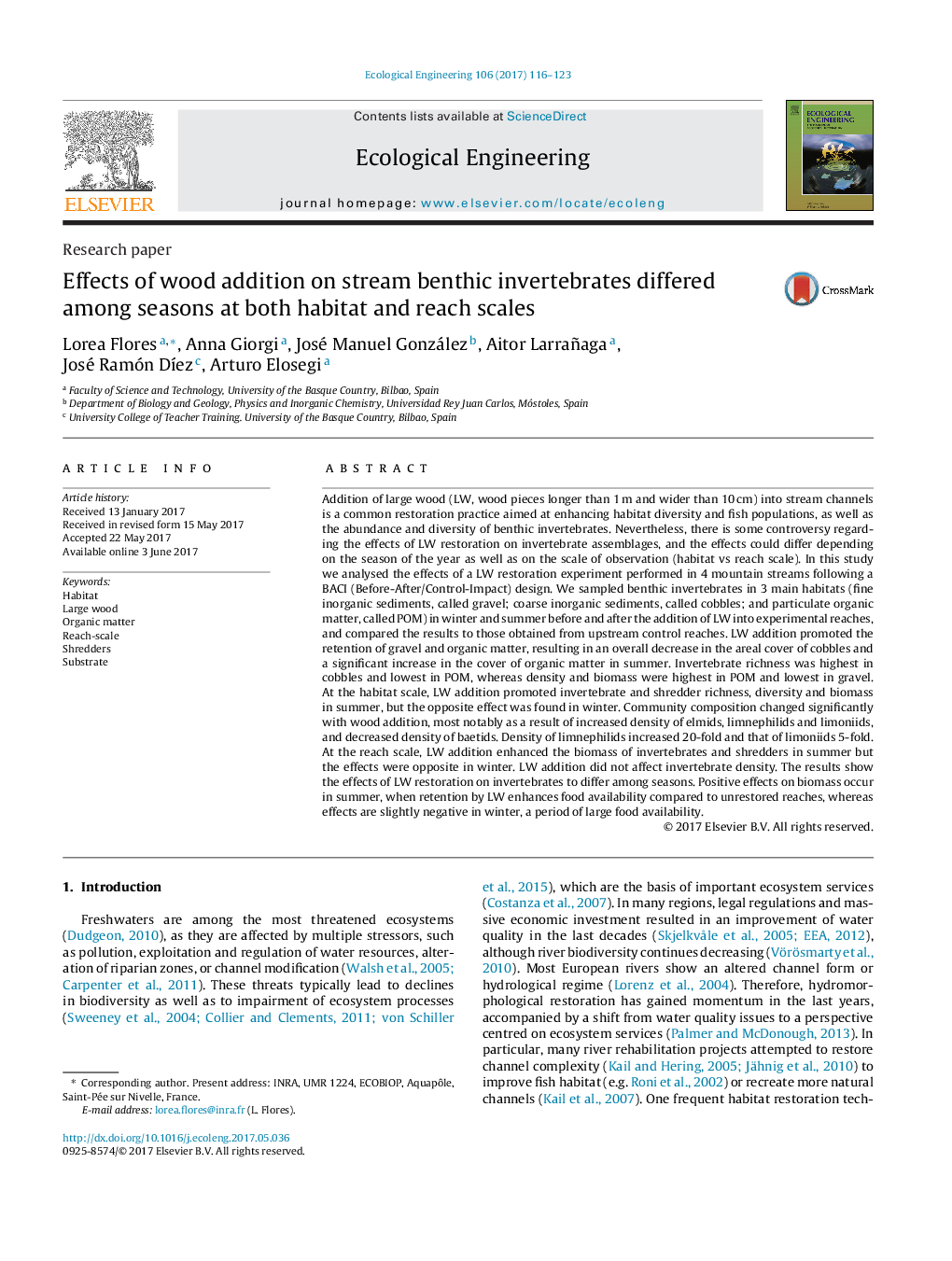| کد مقاله | کد نشریه | سال انتشار | مقاله انگلیسی | نسخه تمام متن |
|---|---|---|---|---|
| 5743829 | 1412322 | 2017 | 8 صفحه PDF | دانلود رایگان |
- Large wood promoted the areal cover of organic matter and gravel in stream reaches.
- Invertebrate diversity and biomass was higher in summer after restoration.
- Large wood increased summer invertebrate biomass at reach scale.
- Large wood affected invertebrate community composition.
Addition of large wood (LW, wood pieces longer than 1Â m and wider than 10Â cm) into stream channels is a common restoration practice aimed at enhancing habitat diversity and fish populations, as well as the abundance and diversity of benthic invertebrates. Nevertheless, there is some controversy regarding the effects of LW restoration on invertebrate assemblages, and the effects could differ depending on the season of the year as well as on the scale of observation (habitat vs reach scale). In this study we analysed the effects of a LW restoration experiment performed in 4 mountain streams following a BACI (Before-After/Control-Impact) design. We sampled benthic invertebrates in 3 main habitats (fine inorganic sediments, called gravel; coarse inorganic sediments, called cobbles; and particulate organic matter, called POM) in winter and summer before and after the addition of LW into experimental reaches, and compared the results to those obtained from upstream control reaches. LW addition promoted the retention of gravel and organic matter, resulting in an overall decrease in the areal cover of cobbles and a significant increase in the cover of organic matter in summer. Invertebrate richness was highest in cobbles and lowest in POM, whereas density and biomass were highest in POM and lowest in gravel. At the habitat scale, LW addition promoted invertebrate and shredder richness, diversity and biomass in summer, but the opposite effect was found in winter. Community composition changed significantly with wood addition, most notably as a result of increased density of elmids, limnephilids and limoniids, and decreased density of baetids. Density of limnephilids increased 20-fold and that of limoniids 5-fold. At the reach scale, LW addition enhanced the biomass of invertebrates and shredders in summer but the effects were opposite in winter. LW addition did not affect invertebrate density. The results show the effects of LW restoration on invertebrates to differ among seasons. Positive effects on biomass occur in summer, when retention by LW enhances food availability compared to unrestored reaches, whereas effects are slightly negative in winter, a period of large food availability.
Journal: Ecological Engineering - Volume 106, Part A, September 2017, Pages 116-123
